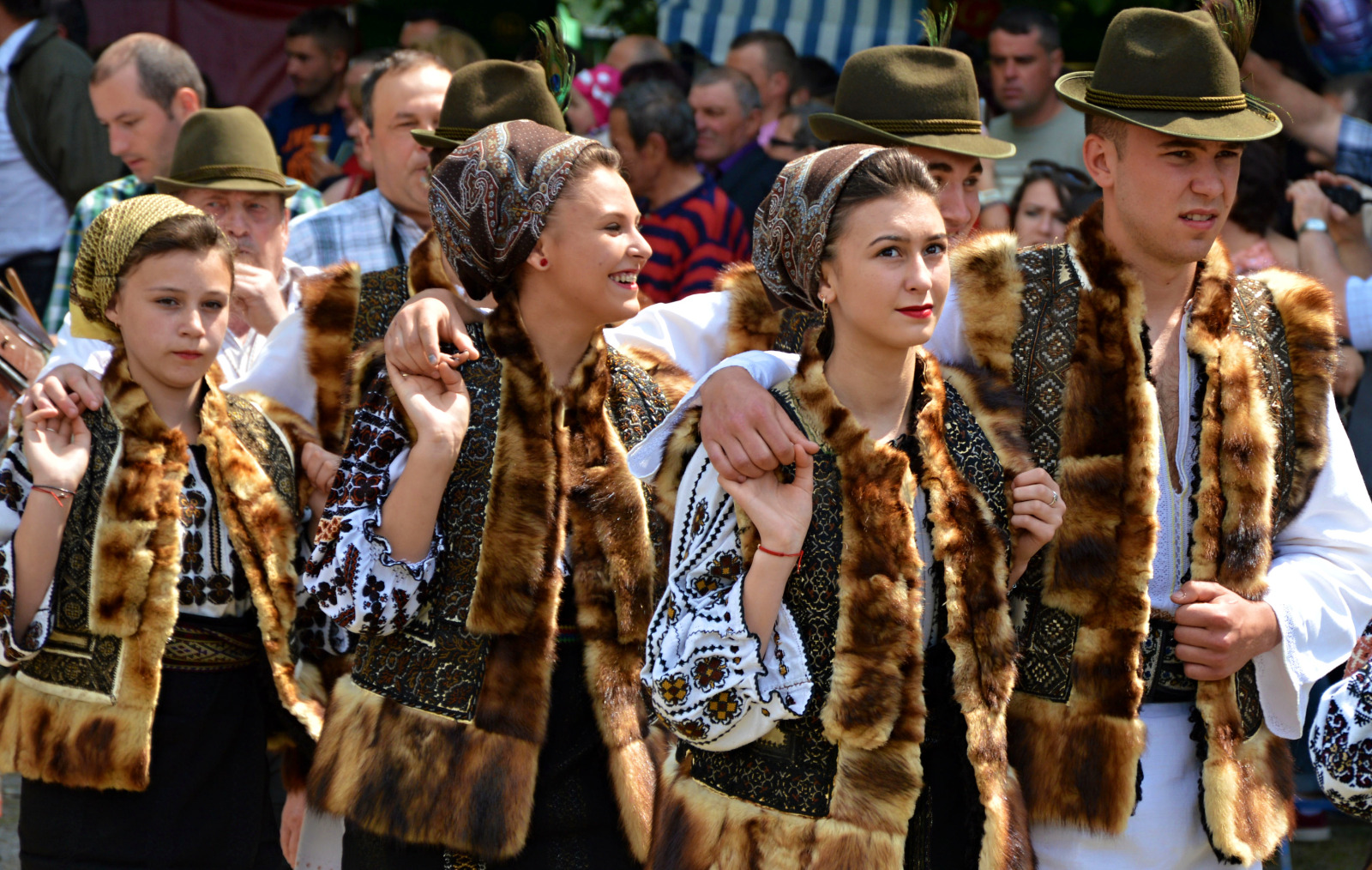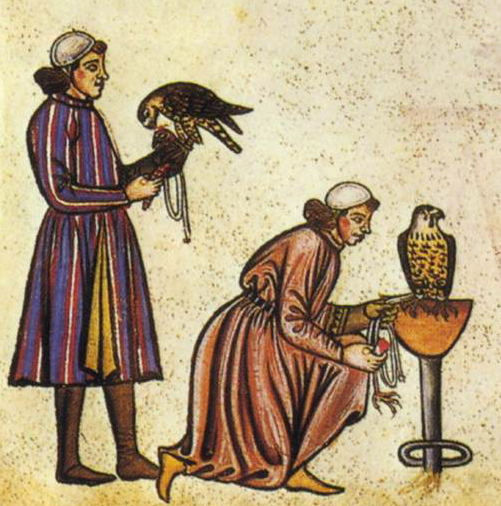|
Spiriduș
A spiriduș in Romanian mythology is said to be a "demon incarnate",Tudor Pamfile, ''Mitologie Românească'', "https://www.scribd.com/document/253650096/Mitologie-romaneasca-Pamfilie" p. 81 or a domestic spirit, oftentimes taking the form of an avian familiar, such as hens, crows, or hunting birds.' The purpose of these familiars once they're summoned, is to act as messengers or intermediaries between the master of the home in which the spiriduș was born, and the devil Satan, also known as the Devil, is a devilish entity in Abrahamic religions who seduces humans into sin (or falsehood). In Judaism, Satan is seen as an agent subservient to God, typically regarded as a metaphor for the '' yetzer hara'', or 'e ....' The master can use the spiriduș to request from the devil any mortal desire, in return for their soul in the afterlife.D. Dan, ''Straja'', p.98 References Romanian mythology Romanian legendary creatures Household deities Birds in mythology Familiars ... [...More Info...] [...Related Items...] OR: [Wikipedia] [Google] [Baidu] |
Romanian Mythology
The folklore of Romania is the collection of traditions of the Romanians. A feature of Romanian culture is the special relationship between folklore and the learned culture, determined by two factors. First, the rural character of the Romanian communities resulted in an exceptionally vital and creative traditional culture. Folk creations (the best known is the ballad Miorița) were the main literary genre until the 18th century. They were both a source of inspiration for cultivated creators and a structural model. Second, for a long time learned culture was governed by official and social commands and developed around courts of princes and boyars, as well as in monasteries. Overview Creation of the world Stories suggest God made the Earth with the help of animals, while the Devil was trying to thwart his plans.Cosma, Aurel. ''Cosmogonia poporului român'' (The Cosmogony of the Romanian People) (1942). Bucharest: Tipografia Ziarului "Universul".Leeming, David Adams. ''Creat ... [...More Info...] [...Related Items...] OR: [Wikipedia] [Google] [Baidu] |
Domestic Spirit
A household deity is a deity or spirit that protects the home, looking after the entire household or certain key members. It has been a common belief in paganism as well as in folklore across many parts of the world. Household deities fit into two types; firstly, a specific deity typically a goddess often referred to as a hearth goddess or domestic goddess who is associated with the home and hearth, such as the ancient Greek Hestia. The second type of household deity is not one singular deity but a type or species of animistic, which usually has lesser powers than major deities. This type was common in the religions of antiquity, such as the lares of ancient Roman religion, the gashin of Korean shamanism, and cofgodas of Anglo-Saxon paganism. These survived Christianisation as fairy-like creatures existing in folklore, such as the Anglo-Scottish brownie and Slavic domovoy. Household deities were usually worshipped not in temples but in the home, where they would be represent ... [...More Info...] [...Related Items...] OR: [Wikipedia] [Google] [Baidu] |
Bird
Birds are a group of warm-blooded vertebrates constituting the class (biology), class Aves (), characterised by feathers, toothless beaked jaws, the Oviparity, laying of Eggshell, hard-shelled eggs, a high Metabolism, metabolic rate, a four-chambered heart, and a strong yet lightweight Bird skeleton, skeleton. Birds live worldwide and range in size from the bee hummingbird to the common ostrich. There are over 11,000 living species and they are split into 44 Order (biology), orders. More than half are passerine or "perching" birds. Birds have Bird wing, wings whose development varies according to species; the only known groups without wings are the extinct moa and elephant birds. Wings, which are modified forelimbs, gave birds the ability to fly, although further evolution has led to the Flightless bird, loss of flight in some birds, including ratites, penguins, and diverse endemism, endemic island species. The digestive and respiratory systems of birds are also uniquely a ... [...More Info...] [...Related Items...] OR: [Wikipedia] [Google] [Baidu] |
Familiar
In European folklore of the medieval and early modern periods, familiars (strictly familiar spirits, as "familiar" also meant just "close friend" or companion, and may be seen in the scientific name for dog, ''Canis familiaris'') were believed to be supernatural entities, interdimensional beings, or spiritual guardians that would protect or assist witches and cunning folk in their practice of magic, divination, and spiritual insight. According to records of the time, those alleging to have had contact with familiar spirits reported that they could manifest as numerous forms, usually as an animal, but sometimes as a human or humanoid figure, and were described as "clearly defined, three-dimensional... forms, vivid with colour and animated with movement and sound", as opposed to descriptions of ghosts with their "smoky, undefined form . When they served witches, they were often thought to be malevolent, but when working for cunning folk, they were often considered benevolent (a ... [...More Info...] [...Related Items...] OR: [Wikipedia] [Google] [Baidu] |
The Devil
Satan, also known as the Devil, is a devilish entity in Abrahamic religions who seduces humans into sin (or falsehood). In Judaism, Satan is seen as an agent subservient to God, typically regarded as a metaphor for the '' yetzer hara'', or 'evil inclination'. In Christianity and Islam, he is usually seen as a fallen angel or jinn who has rebelled against God, who nevertheless allows him temporary power over the fallen world and a host of demons. In the Quran, Iblis (Shaitan), the leader of the devils (''shayāṭīn''), is made of fire and was cast out of Heaven because he refused to bow before the newly created Adam. He incites humans to sin by infecting their minds with ''waswās'' ('evil suggestions'). A figure known as ''ha-satan'' ("the satan") first appears in the Hebrew Bible as a heavenly prosecutor, subordinate to Yahweh (God); he prosecutes the nation of Judah in the heavenly court and tests the loyalty of Yahweh's followers. During the intertestamental period, po ... [...More Info...] [...Related Items...] OR: [Wikipedia] [Google] [Baidu] |
Romanian Legendary Creatures
Romanian may refer to: *anything of, from, or related to the country and nation of Romania **Romanians, an ethnic group **Romanian language, a Romance language ***Romanian dialects, variants of the Romanian language **Romanian cuisine, traditional foods **Romanian folklore *'' The Romanian: Story of an Obsession'', a 2004 novel by Bruce Benderson *''Românul ''Românul'' (, meaning "The Romanian"; originally spelled ''Romanulu'' or ''Românulŭ'', also known as ''Romînul'', ''Concordia'', ''Libertatea'' and ''Consciinti'a Nationala''), was a political and literary newspaper published in Bucharest, Ro ...'' (), a newspaper published in Bucharest, Romania, 1857–1905 See also * * {{disambiguation Language and nationality disambiguation pages ... [...More Info...] [...Related Items...] OR: [Wikipedia] [Google] [Baidu] |
Household Deities
A household deity is a deity or spirit that protects the home, looking after the entire household or certain key members. It has been a common belief in paganism as well as in folklore across many parts of the world. Household deities fit into two types; firstly, a specific deity typically a goddess often referred to as a hearth goddess or domestic goddess who is associated with the home and hearth, such as the ancient Greek Hestia. The second type of household deity is not one singular deity but a type or species of animism, animistic, which usually has lesser powers than major deities. This type was common in the religions of antiquity, such as the lares of Religion in ancient Rome, ancient Roman religion, the gashin of Korean shamanism, and cofgodas of Anglo-Saxon paganism. These survived Christianisation as fairy-like creatures existing in folklore, such as the Anglo-Scottish brownie (folklore), brownie and Slavic domovoy. Household deities were usually worshipped not in ... [...More Info...] [...Related Items...] OR: [Wikipedia] [Google] [Baidu] |
Birds In Mythology
Human uses of birds have, for thousands of years, included both economic uses such as food, and symbolic uses such as art, music, and religion. In terms of economic uses, birds have been hunted for food since Palaeolithic times. They have been captured and bred as poultry to provide meat and eggs since at least the time of ancient Egypt. Some species have been used, too, to help locate or to catch food, as with cormorant fishing and the use of greater honeyguide, honeyguides. Feathers have long been used for bedding, as well as for quill pens and for Fletching, fletching arrows. Today, many species face habitat loss and other threats caused by humans; bird conservation groups work to protect birds and to influence governments to do so. Birds have appeared in the mythologies and religions of many cultures since ancient Sumer. For example, the dove was the symbol of the ancient Mesopotamian goddess Inanna, the Canaanite mother goddess Asherah, and the Greek goddess Aphrodite. Athe ... [...More Info...] [...Related Items...] OR: [Wikipedia] [Google] [Baidu] |





